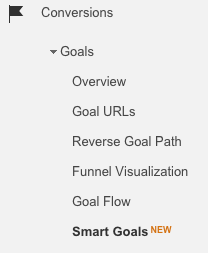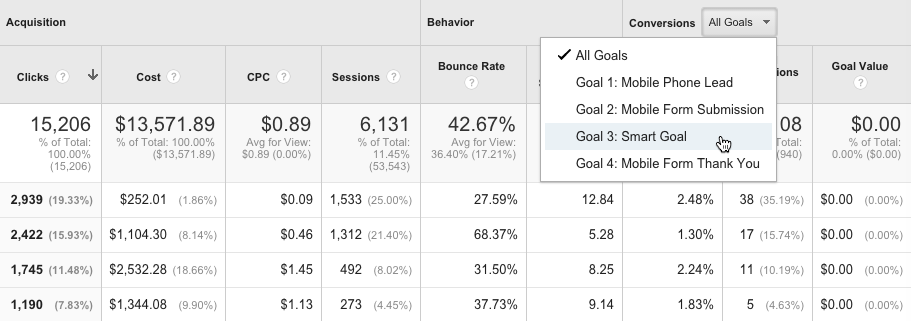AdWords recently introduced Smart Goals for advertisers who are not using conversion tracking. The Smart Goals measure user behavior to determine how likely they are to convert. Even with this new feature, if you have the ability to set-up goals or conversions tracking, these options would be ideal.
Types Of Smart Goals
- Time on site
- Pages per visit
- Location
- Device
How It Works
Google Analytics measures the top 5% of the best performing visitors and creates a threshold from this data to measure all future visits. You must link your Analytics to your AdWords account and data sharing must be enabled. You must have more than 1,000 visits to this view before you can activate Smart Goals. Once you have enough visits you will see this message inside your Analytics view.
Once you have enabled Smart Goals, you will then be able to import into AdWords. Google also recommends you let the data accumulate for a few weeks before you adjust your bidding strategy. They also suggest using Target CPA bidding strategy, but you can also use CPC bidding.
It might be a good idea to test this bidding option on one campaign before rolling it out to all your campaigns. This feature is brand new and there is not a lot of performance data available yet. The jury is still out on this new feature and only time will determine if it measures up.
Also, there are a few limitations. 1) You cannot customize this data, meaning your smart goals could be wrong. 2) If your website receives more than 1 million user sessions per day you cannot use this metric.
In Analytics, you can view statistics under “Conversions > Goals > and then selecting Smart Goals.”
For some advertisers, it might make sense to create a new view specifically devoted to measuring Smart Goals, however, you will have to wait for this view to accumulate at least 1,000 clicks. Keep in mind that if you activate Smart Goals, these will show up in Analytics under AdWords data. The smart goal ”conversions” will show up in the totals of All Goals and you may have to subtract them from your reporting. This is why we recommend creating a separate view to avoid confusion.
Pros And Cons
It is questionable how accurate this type of data is, and there are plenty who agree and disagree with this type of measurement. Just take a look at the buzz about this topic in Twitter.
I can see some pros to using these goals for certain industries. Having managed automotive paid search for so many years, these are exactly the types of metrics we had to use to optimize our paid search. In the case with automotive, I think Smart Goals make perfect sense.
We noticed a few things in our automotive paid search performance. Parts & service customers make up the majority of conversions and they often spend very little time on the website and visit very few pages. Vehicle shoppers visit many pages and spend a long time shopping the vehicles on the website but rarely convert. If we were to optimize our account based on actual conversions we would probably adjust our account performance away from actual vehicle shoppers.
Considering this data, I would say some industries would welcome testing out Smart Goals in their AdWords accounts. Obviously, actual conversion data is always the preferred way of judging account performance, but when you are unable to do that, Smart Goals may be a valuable feature.













